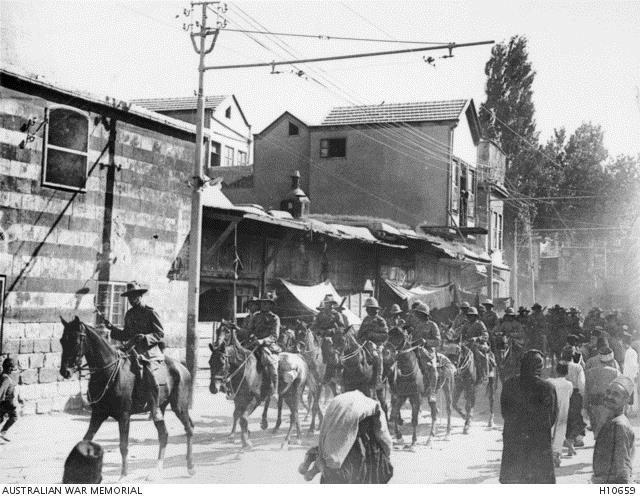Damascus was the next key objective for Allied forces after the earlier Megiddo offensive. The city was a key logistics centre for the Ottoman army, but since 19 September their forces had been falling back across northern Palestine and Syria, pursued over hundreds of kilometres by large columns of mounted troops from the Desert Mounted Corps led by General Harry Chauvel. This larger pursuit operation became known as The Great Ride. The first troops into Damascus well before dawn on 1 October were most probably a patrol of the 4th Light Horse Regiment. At about 5:30 am, the 10th Light Horse Regiment rode into the city. Its CO, Temporary Lieutenant Colonel Arthur Olden entered the town hall to meet the city’s Governor Emir Said who had only been appointed to this role on the previous day. The new Governor and his officials handed over the whole city to Olden with a formal document of surrender. At 9:00 am the same morning an open-top Rolls Royce arrived at the town hall carrying British Lieutenant Colonel TE Lawrence, better known as ‘Lawrence of Arabia’. He had come to accept a ceremonial surrender on behalf of his Arab colleague Prince Feisal and his army, but he was annoyed to find that the Australians had claimed that honour before him. By this time, Lt Col Olden, the whole 3rd Light Horse Brigade and a brigade of Indian cavalry had been and gone through the city for several hours, continuing the pursuit of fleeing Turkish and German forces northwards along the road to Homs. There were more victories in the following weeks which brought about the collapse of the 600-year old Ottoman Empire on 30 October 1918.
Damascus
This listing commemorates the capture of the Syrian city of Damascus on 1 October 1918.



